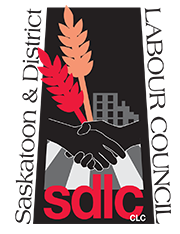Help us choose new names for our Prince Albert, Saskatoon and Regina boardrooms
Saskatchewan is the traditional territory of the Cree, Dene, Dakota, Nakota, Lakota, and Saulteaux peoples and the homeland of the Métis nation. We are grateful for the opportunity to live and work here and we thank the many generations of people who have taken care of this land.
In the spirit of connection to the land, SGEU is naming the boardrooms in each of our three locations (Regina, Prince Albert, and Saskatoon) after trees, lakes, and animals.
Members are invited to vote for their favourite names. Please click the link below to place your vote for the boardroom names.
This survey is now closed.
Prince Albert Office Boardroom Options - Saskatchewan Trees
Tamarack Tree
The tamarack or larch is a small, slender tree which rarely grows more than 15 m tall. The name tamarack comes from an Algonquian word meaning “wood to make snowshoes.”
Manitoba Maple Tree
The Manitoba maple is most prevalent along the river valleys and coulees of south-central and southeastern Saskatchewan. Before settlers industrialized maple syrup for economic benefits, maples were a symbol of resource and connection to the land for Indigenous peoples.
White Elm Tree
The white elm is one of the largest species of elm native to North America. As a craftwork, the elm was used as a floor matting when camping in snow; boiled to weave baskets, bedding and mats; and woven into frames for snowshoes and fishing nets.
Bur Oak Tree
Bur oak is found in the southeast of the province, mainly along the valleys of the Qu’Appelle and Souris Rivers. For some Indigenous cultures, bur oaks were used as “burial trees” for aboveground burial sites while others used large bur oaks as “council trees.”
Trembling Aspen Tree
Trembling Aspen is found from coulees in the south to the groves of the Aspen Parkland to the boreal forest. Some Indigenous cultures drank the syrup produced by the inner bark.
White Spruce Tree
The white spruce is the largest provincial tree. Spruce trees can represent unity and peace among leaders, peoples and nations for many Indigenous cultures.
Saskatoon Office Boardroom Options - Spirit Animals
Polar Bear
Polar bears are greatly respected by Inuit hunters as the most intelligent animal in the Arctic, and as a symbol of the resilience, patience and determination that is needed to survive in the harsh climate.
Owl
The owl is a symbol of wisdom and sacred knowledge. It is a silent flyer with great vision and hearing. Owl feathers are worn to ward off evil spirits.
Turtle
Some creation stories describe a flood where the turtle gives his shell for the land to grow on its back until all can inhabit it. Some believe that the turtle represents healing, wisdom, spirituality, health, safety, longevity, protection, and fertility.
Horse
The horse symbolizes speed, freedom, strength and grace. The horse accompanied the Plains People on the battlefield, on the hunt and when they moved.
Bison
The bison is a sacred animal to the Plains First Nations because it provided them with clothing, food, shelter, and tools.
Eagle
In stories and legends the eagle is referred to as the Thunderbird. The eagle has great powers of vision, strength and courage.
Wolf
The wolf is respected for its hunting skills. It is a symbol of family and loyalty. Many First Nations have great respect for wolves because wolves are like people—they hunt and defend their family.
Loon
The Loon is a symbol of peace, tranquility and grace. Despite being a largely solitary bird, the loon is also understood to be deeply loyal, and possesses great strength of family.
Regina Office Boardroom Options - Saskatchewan Lakes
Good Spirit Lake
Good Spirit Lake was originally called “Devil’s Lake.” Matthew Cocking of the Hudson Bay Company in 1774 wintered there and called it “Witch Lake.” Later, Robert Russell Smith, who was the postmaster at the spot, misinterpreted the Cree/Saulteaux term “manitow” which actually meant “good spirt”.
Lake Athabasca
Lake Athabasca is the largest lake in Saskatchewan. Lake Athabasca is of Cree origin, meaning “meeting place of many waters.”
Little Manitou Lake
Located in central Saskatchewan, Little Manitou Lake is named for the Algonquian word meaning “mysterious being” and renowned for the purported healing properties of its saline waters.
Reindeer Lake
Reindeer lake is the second largest lake in Saskatchewan and ninth largest in Canada. The rock formations around the lake are some of the oldest on earth, while Deep Bay, located on the Southwestern end of the lake, is unusually deep because it was formed by a meteorite that hit about 140 million years ago.
Waskesiu Lake
Waskesiu Lake is located roughly in the center of Prince Albert National Park. Named after the Cree word for “Red Deer” or “Elk”, the lake was an early fur trade post for the Hudson Bay Company.
Quill Lakes
Located north of Wynyard, Quill Lake is an internal drainage basin fed by numerous small streams. It was named for bird quills collected near shorelines and shipped to England for use as quill pens.
Katepwa Lake
Located in the Qu’Appelle Valley, Katepwa Lake originated from the Cree word Kahtapwao, which means “What is calling?” Indigenous peoples gave the name to the last in the chain of four lakes (now known as Lake Katepwa) for tradition had it that spirits inhabited the shores of the lake.
Pasqua Lake
Pasqua Lake is along the course of the Qu’Appelle Valley. Pasqua Lake was named after the bands first Chief, Chief Paskwa who was a major negotiator and signatory to Treaty Four.
Echo Lake
Echo Lake is along the course of the Qu’Appelle Valley. Echo Lake is named because of the echo heard by Indigenous peoples while paddling on the lake.





